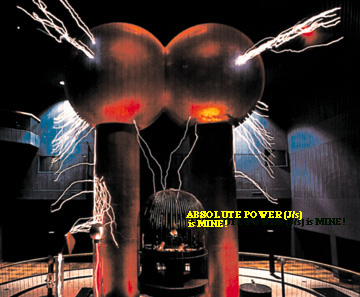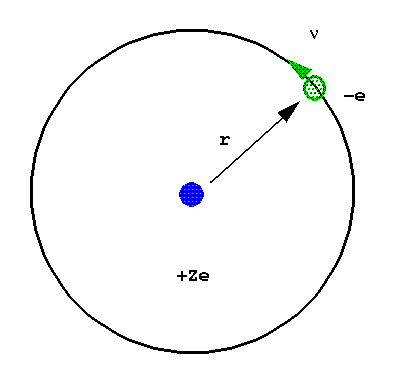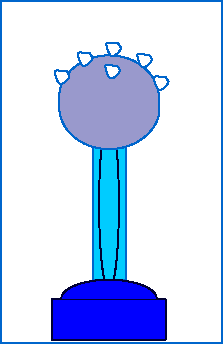1) You can always multiply by 1
Example: 1.6 km = 1 mile. 1.6 km / 1 mile = 1. To convert miles to km, I multiply by 1:
2) Multiply both sides of an equation by the same thing (number):
Know that SF = m a
Also know a and SF. How do I solve for m?
Multiply both sides of equation, above by the same thing (1/a):
Efficiency in transport of people is quantified by the energy cost per "passenger km" (or passenger mile in U.S.). For example, the energy cost of the bicycle is 130 kJ/passenger km (kJ stands for 1000 Joules). For walking it is 200 kJ/passenger km. The lower the energy cost, the more efficient the transportation.
The energy cost states the maximum efficiency attainable. The "load factor" gives the percentage of that maximum that is typically attained. For example, if your car is rated at 2000 kJ/passenger km for a full load of 4 adults, and you and your friend drive across town, your load factor is 50%. The energy cost of your driving across town is:
If you and your friend drive the 10km across town your total energy consumption per passenger is:
If you and three friends drive across town, the consumption is:
The contribution mass transit (buses, subways, etc.) makes towards conserving energy in transportation depends on the average load factor of the bus or subway train.
{worked example similar to Aubrecht}
and what if 10% of us commuted by bicycle?
Obviously, raising the corporate average fuel economy (CAFE) for passenger cars is a good thing. The rewards for this are:
We (U.S.) currently import over 60% of the petroleum we consume. Take away cars, and we would import little to no petroleum.
Every 1 mile/gallon improvement leads to a reduction of 0.0229 g/mile x 12,000 miles/year x 200,000,000 cars = 5,500 metric tons of hydrocarbon emissions. And I just guessed that there are 200 million cars in the U.S., there are probably more.
![]()
How do we increase fuel economy without increasing pollutants emitted per passenger km? The three most effective measures are:
That means get out of those "sport utes," which are relatively heavy and have greater drag (higher off the ground)!
The federal government has in place a set of standards for fleet mileage (CAFE). It has been reinstated for passenger cars, but currently sport utes and mini-vans, which are classified as light trucks, are exempt from both fleet mileage goals and emission standards.
It may seem to be an obvious thing to put those types of vehicles up for CAFE standards, but remember that 8.5% of our total economy relies on selling automobiles. Mandating that high profit sport utes and minivans meet CAFE standards might put a dent in our humming economy (oh no!).

Well this seems to be a no-brainer. Trucks require about 10 times as much energy to transport a ton of load as do railroads. However, freight railroads pay their own way for construction and maintenance of track. Trucks pay only about 76% of their incurred costs (as of 1995.) However, the Oregon chapter of the AAA (American Automobile Association) claims that the gas tax restructuring just passed by the Oregon legislature actually shifts road construction and maintenance costs from the trucker to the automobile driver. Hmmm.

You have probably experienced electric charge after walking across a carpeted room and reaching for a door knob.
Our physical world is built of atoms, and atoms, in turn, comprise neutrons, protons and electrons.
To develop a simple mental picture of an (invisible) atom, image electrons orbiting a nucleus composed of protons and neutrons.

Neutrons have mass but are charge neutral-- referring to the fact that they have no charge.
Protons have the same mass as a neutron but positive charge (by definition).
Electrons are much smaller in mass (1/1830 of a proton's mass to be precise) and have negative charge.
Normally atoms posses equal numbers of positive and negative charges. However some actions, such as rubbing shoes on a carpet, can strip like charges off of atoms. The result is that shoe wearer becomes charged-- her positive and negative charges are out of balance.
Charge comes in bundles of specific size, as the proton's charge is the same as the electron's (but with opposite sign). The size of this bundle is called a quantum of charge. Charge comes in bundles that are indivisible.... one can have a charge of +1, +2, +3, etc, but not of 1/2 or 1/3. Charge is measured in Coulombs (C).
An object with -1 coulombs of charge has a net surplus of 6 x 10^18 electrons!
![]()
It is observed experimentally that like charges repel each other and unlike charges attract. In the simple atom depicted above, the attraction between the electron and proton within the nucleus keep the electron from flying off. We can try a simple experiment by rubbing a plastic or glass rob on cat fur or silk, respectively. In doing so, we charge the rod leaving it with more of one kind of charge than the other. Now let's place the rod near an "uncharged" pith ball- a metal foil covered styrofoam ball- suspended on a string:

In saying that the charged rods/pith balls repel or attract, we really mean that they exert forces on one another. The negative charge on the metal surface of the pith ball is attracted to the positively-charged glass rod. It moves as close as it can get to it.
The entire pith ball still has a neutral charge, but the negative charge on it is closer to the rod than the positive charge. The attraction between negative charges and the rod wins, and the ball is pulled (by a force) towards the glass rod. So the shorter the distance between the charges, the stronger the force between them.
Experimentation shows that the force between two charged objects is proportional to the charge on each object and weakens according to the square of the distance separating the charged objects:
In this case, "q" is the standard symbol that means "amount of charge (in Coulombs, usually). The separation is typically stated in meters (m). The constant for these units is:
For two objects with given charges q_1 and q_2, the force between them will diminish by 1/4 if the separation between the objects is doubled.
It turns out that this is exactly analogous to the force between two masses, which we have termed "the force of gravity." For gravity, however, we almost always are referring to the attraction of an object to the Earth. As the Earth is really quite large, moving small distances above its surface has very little affect on the force (and acceleration) of gravity.
To observe the electric force in action, we can watch what happens when styrofoam balls sitting on top of a Van de Graff generator accumulate excess charge from the generator:
